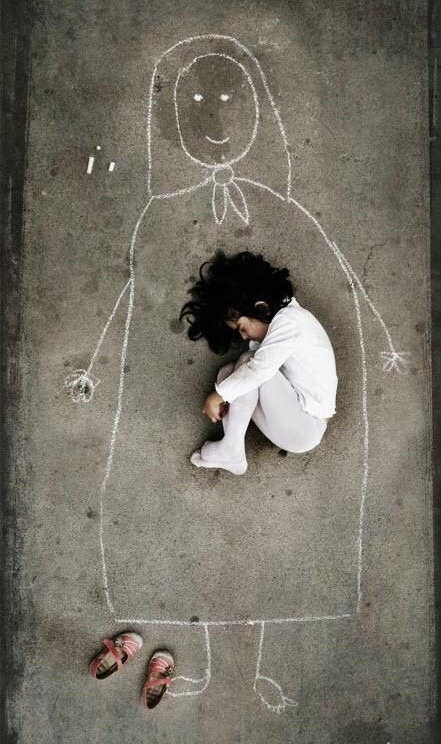Barry Ashworth
works & exhibitions
Glimpse
Glimpse
Glimpse the Inner world
見ることで広がる芸術の世界 。。。
The World Unfolds with a Glimpse …
物体を異なる角度から観察することで、その物体に対する認識が同一の感覚の中で変化することがあります。ほんの一瞬で「花」と視覚的に認識できますが、その花を全方位から観察することで、初めてその花が本当に何であるかを完全に理解することができます。経験を通じて、私たちの脳は、ほんのわずかな手がかりでも全体像の仮想的なイメージを自動的に完成させ、ギャップを埋めます。
Terminal
Tarmac – Marks of
Life
Airports are strange places—pit stops for sky taxis. A place where aluminum birds of all shapes and sizes come to rest and refuel. They radiate the human condition, reflecting all our emotions: hellos and goodbyes, laughter and tears. They symbolize both beginnings and endings—the halfway point between leaving and arriving.
No horizons
Visual resonance

No horizons
現実を超える視覚の交響曲 — あなたの心に響く一枚を。
これらの風景は、実在する世界を模倣しているように見えますが、アーティストの手にかかることで、現実そのものとは異なる表現へと昇華されています。一目見ると、まるで現実世界を鏡に映したかのような馴染みあるイメージのように思えます。しかし、これらの作品をじっくりと観察し、一つの作品群として向き合うと、それらがアーティスト独自の視点で捉えたスクリーンの概念を表現していることに気づかされます。カメラで切り取られ、さらにポストプロダクションで加工されることで、観る者に深い感動と発見を呼び起こすのです。
A Symphony of Vision
The original subject that is imitated can exist in the real world but not always as the artist has rendered it. That is the case with these landscapes. On first sight, they seem like superfluous and duplicated screens of the existing world in a mirror image. Images seem to be just stereo typical mirrors of known screens. But on closer examination and when place together in a body or work, they are in fact representations of the artists own conceptual ideology of what the screen is, cropped and manipulated in the camera and in post production to evoke a double response from the viewer.
There are valid and compelling motives to do so. From a temporal point of view, the real world, especially the landscape is transient, and therefore begs to be fixed forever. From a spatial point of view, every perception is bound to a certain time and place: wherein lays the pleasure to have a photo of your beloved when you are traveling, or to discover exotic places while sitting in your lazy chair flipping through a book at home.
These landscapes are musical representations of the visual resonance that is inherent in the natural environment. If the viewer is inclined to look beyond the surface and not just glance at them, their true beauty unveils itself in a crescendo of shades of gray.
The Human form
Vailing

The Human form
服は謙遜の美しさを映し出す
服の導入に至る多くの要因について改めて言及するのは不必要でしょう。まず第一に、極端な温度から身体を守る必要性があります。また、富の増加は人々をより多くの布で体を覆わせるか、またはその富を示す宝飾品を身につけさせます。このように、社会的階層はしばしばエロティックな言葉で表現されます:
あらゆる規則の違反や、肉体労働と矛盾するような外見(長い爪、白い肌など)を採用することは、しばしば権力や富の象徴であり、富を誇示することは、体にさまざまなアイデンティティの象徴を飾る一般的な傾向の特別な一例に過ぎません。しかし、これらのイメージは、服を謙遜の表現として捉えています。
Threads of Modesty
It will be superfluous to be reminded of the many factors that lead to the introduction of clothes. To begin with, there is the necessity to protect the body against extreme temperatures. Also increasing wealth induces man to cover his body with ever more layers of fabric, or to wear jewellery that testifies to his wealth. Thus, social stratification is often expressed in erotic terms:
infringement of all kinds of rules and the adoption of an appearance that is irreconcilable with hard labour (long nails, white skin …) are often signs of power or wealth and the flaunting of wealth is only a special case of the general propensity to adorn the body with signs of all kinds of identity. These images focus, however, on clothes as an expression of modesty.
Light and life
Documentary

Light and life
English
Social documentary photography has always been about the relationship between light and life. It is a complex and fully human way of capturing, describing and explaining to others what words often fail to do. From this perspective, documentary photography signifies a social and empathic visual encounter with “reality,” one that is capable of accentuating the textured fabric of the human condition with dignity, grace, and compassion.
Ashworth’s skilled documentary photography responds to the world emotionally and intellectually by documenting people, places, and things with honesty and humility. The power of these images resides in there insistence on being a holistic and humanistic enterprise. In turn, the photographer must be faithful to a moment of truth, as it is encountered the world. At its best, the images can goad us into considering more consciously events that affect our lives
We have become socially conditioned by the deluge of impressions that meet the eyes daily, from the run-of-the-mill to the iconic. Within our visually pervasive culture, this type of photography remains committed to documenting the immediacy and intimacy of life as it unfolds around the corner and across continents. It is about telling stories with a camera - it is a way of allowing the viewer to see beyond the picture-making process by entering into and connecting with humanity and the world as it is fixed within our collective memory of place and time. The photographer’s eye informs, constructs, and shapes social reality. As eyewitness to the tumult and triumph of human endeavor, major and minor, the photographer’s truth - the image - fixes and mediates a moment of time, not only as a representative anecdote, but also as a reality.
The Plateaux Of Mirrors
Mimesis

The Plateaux Of Mirrors
English
We call something an imitation, a mimesis, where we seem to perceive something where in fact, on closer view there is either nothing (representations, memories, hallucinations, dreams) or something else – a mirror, a reflection, printed paper. As long as you do not have a closer look, or understand the process, you take the imitation, the virtual image, for the object, the real perception. Thus, a mental representation seems to be the original, as long as you do not look, listen or touch, for then it appears that you find yourself in the real world when in fact It was only a dream.
An aural imitation like the recording of someone’s voice or sounds of nature seem to be the original, as long as you do not look for the sorce of the audio, then you understand that the sound is produced by a loudspeaker: ‘It is only a recording’. This is particularly apparent is the case of visual imitation. The photographer needs only to provide the visual appearance, as long as you do not see, hear or touch the original subject, you think you are dealing with an original event.
Many an imitation can be found just like this in nature, as when we descry all kinds of figures in clouds, shadows, roots and branches. But when the artist, as with these photos denise the viewer any visual reference points the line between mimesis and the unreal becomes blurred to such an extent that the viewers brain has trouble interpreting the subject and therefore is forced into a semiotic and mimesis conundrum to make scene of the images from their past experiences.
Time
Time

Ticking Time
The observation of an object from different angles can alter the our perceptions of that object within one and the same sense. A single glimpse suffices to identify a visual impression as ‘flower’, but it is only when you have examined the flower from all sides, that you get a complete image of what there is really to be seen. Through experience, our brains automatically complete and fill in the gaps to the slightest hint of a hypothetical image of the whole.
Herein lies the beauty of these images. A limited number of carefully chosen hints suffices to evoke the illusion that something is present there in its full sensory glory. By not depicting something as a whole and rendering the minutest information suffices to provide the minimal information necessary to evoke the desired impression.
Portraits
Portraits

Under construction
The observation of an object from different angles can alter the our perceptions of that object within one and the same sense. A single glimpse suffices to identify a visual impression as ‘flower’, but it is only when you have examined the flower from all sides, that you get a complete image of what there is really to be seen. Through experience, our brains automatically complete and fill in the gaps to the slightest hint of a hypothetical image of the whole.
Herein lies the beauty of these images. A limited number of carefully chosen hints suffices to evoke the illusion that something is present there in its full sensory glory. By not depicting something as a whole and rendering the minutest information suffices to provide the minimal information necessary to evoke the desired impression.
Forgotten Moments
Moments

Forgotten Moments
The observation of an object from different angles can alter the our perceptions of that object within one and the same sense. A single glimpse suffices to identify a visual impression as ‘flower’, but it is only when you have examined the flower from all sides, that you get a complete image of what there is really to be seen. Through experience, our brains automatically complete and fill in the gaps to the slightest hint of a hypothetical image of the whole.
Herein lies the beauty of these images. A limited number of carefully chosen hints suffices to evoke the illusion that something is present there in its full sensory glory. By not depicting something as a whole and rendering the minutest information suffices to provide the minimal information necessary to evoke the desired impression.




